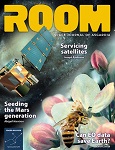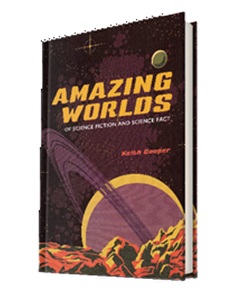Most spacers are well aware of the inextricable links between science fiction and real space exploration, but this book extends the link to the growing field of exoplanet discovery. In it, the author compares some fictional planets in film, TV and literature with “our current scientific understanding” to reveal that “the real exoplanets… are truly stranger than fiction”.
The book’s ten chapters cover everything from ocean worlds to exomoons with “worlds of always winter” in the middle. Perhaps surprisingly for such a light-hearted treatment, it also benefits from a (mainly fictional) bibliography and an index. It includes an eight-page colour insert, but these pictures are the only illustrations.
In his opening chapter, titled “Strange New Worlds” (from Kirk’s voice-over in the Star Trek TV series), the author reminds us that the first confirmed exoplanet was discovered as long ago as 1992. On the other hand, he characterises this as “relatively recent” in comparison with the history of science fiction, which has featured alien planets for well over a century.
The author’s interviews with planetary scientists and science fiction authors, coupled with his own knowledge and interests, form the basis for the book, which provides an entertaining analysis of the field. As for style, it is a bit of a mixed bag: alongside some accessible, sometimes loose, writing, there is an academic hangover. Phrases such as “before we go any further” and “as we shall see throughout this chapter” serve only to remove the reader from the narrative and delay the story.
Mostly, however, the book represents an entertaining nexus between the two worlds of science fiction and planetary science. In conclusion, while recognising the “inspiring, thought-provoking and insightful” nature of science fiction, the author cites a key lesson from exoplanet research: the rare and special nature of the Earth.











